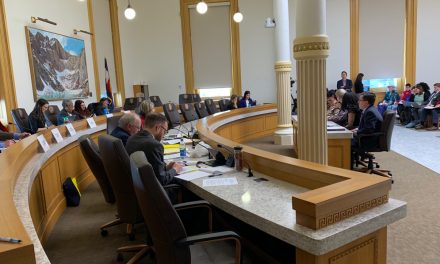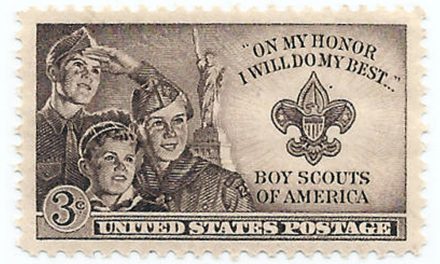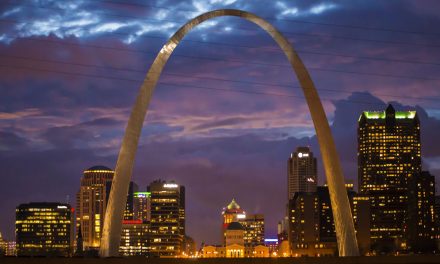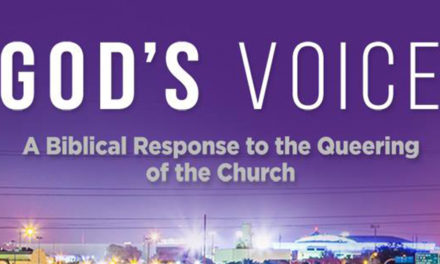A new Gallup poll reports, “LGBTQ+ identification in the U.S. continues to grow, with 7.6% of U.S. adults now identifying as lesbian, gay, bisexual, transgender, queer or some other sexual orientation besides heterosexual.”
“The current figure is up from 5.6% four years ago and 3.5% in 2012, Gallup’s first year of measuring sexual orientation and transgender identity,” the report states.
The increase in those identifying as “some other orientation besides heterosexual” comes largely from younger adults – Generation Z and Millennials, Gallup explains:
Overall, each younger generation is about twice as likely as the generation that preceded it to identify as LGBTQ+. More than one in five Gen Z adults, ranging in age from 18 to 26 in 2023, identify as LGBTQ+, as do nearly one in 10 millennials (aged 27 to 42).
The percentage drops to less than 5% of Generation X, 2% of baby boomers and 1% of the Silent Generation.
Women tend to identify as “LGBTQ+” more than men, at 8.5%. Only 4.7% of men say they are one of these sexual identities.
This hold true, with higher percentages, in younger generations, as Gallup explains:
Women are more likely than men to have an LGBTQ+ identification in the three youngest generations, especially in Generation Z and the millennial generation. Close to three in 10 Gen Z women, 28.5%, identify as LGBTQ+, compared with 10.6% of Gen Z men. Among millennials, 12.4% of women and 5.4% of men have an LGBTQ+ identification.
The data comes from telephone interviews “with more than 12,000 Americans aged 18 and older.”
Gallup’s research prompts the question: Why are so many younger adults identifying as “lesbian, gay, bisexual, transgender, pansexual, asexual, queer or other LGBTQ+”?
While this shift has accelerated in recent years, it didn’t come out of nowhere. Of course, the breakdown of the family, social media, and adolescent’s and teen’s rebelling and adopting faddish trends all play a part in this.
But virtually every area of society has gradually – and then speedily – adopted LGBT ideology, indoctrinating successive generations. Here are just a few reasons why each new generation and our culture have shifted so dramatically on these issues.
For for the past 40 years, LGBT activists and their allies have been teaching children gay- and transgender ideology in public schools.
In 1984, Virginia Uribe, an educator and counselor, started the Project 10 program in the Los Angeles Unified School District. The goal was to provide support for gay-identified students and keep them from dropping out. The project’s name was based on the myth that 10% of the population was “gay.”
A few years later, the Gay Straight Alliance (GSA – now known as “Gender and Sexuality Alliances”) and GLSEN were formed to combat “homophobia” in schools and to support non-discrimination laws based on “sexual orientation.” Now, GSA Network claims there are more than 4,000 GSAs in schools across the country, including elementary schools.
Beginning in the 1990s, activist groups, such as the Southern Poverty Law Center, the Human Rights Campaign and the National Education Association created LGBT educational materials for teachers.
Then, state legislatures got involved, with six states now mandating that curriculum include teaching about gay- and transgender-identified individuals in all public schools – from K-12th grade.
LGBT activism redefined what it means to be human, creating identities not based on being male or female, but on subjective, internal sexual feelings and experiences.
Historically, people didn’t think about “a homosexual” or “being gay” as a type of person – as if “homosexuals” were somehow a different race or species. People knew there were men or women. And while men or women might engage in different sexual behaviors, those behaviors didn’t create a new identity.
In the 1800s and through the 1900s, the idea developed and grew that some people might be born with innate leanings toward sexual behavior with the same sex – as if they were a unique category of persons.
What developed were identities based on so-called “sexual orientation” – thoughts, feelings, attractions, desires and behaviors – and on a person’s internal sense of being male or female, so called “gender identity.” Unlike male and female, “sexual orientation” and “gender identities” are not concrete, scientific realities, but social constructs.
In addition, LGBT-identified individuals quickly jumped on the bandwagon of Marxist identity politics – which views all of life, relationships and society as a struggle between “oppressor” and “oppressed.” So-called “sexual minorities” were added to the list of oppressed groups – deserving special treatment, status and protection.
These newly constructed, “oppressed” identities led to non-discrimination laws that forced “sexual orientation” and “gender identity” into every public area.
Once these manufactured identities were established as legitimate, LGBT activist groups began demanding that “sexual minorities” be protected classes.
“Sexual orientation” was elevated to this status in employment laws, first, in cities in the early 1970s. States followed, with Pennsylvania the first to add “sexual orientation” to employment nondiscrimination laws in 1975 – only affecting state employees. Wisconsin was the first state to include all employers in 1985.
Hundreds of states and municipalities have now added “sexual orientation,” “gender identity” and “gender expression” to non-discrimination laws, covering employment, housing, education and public accommodations.
The federal government and courts also began promoting homosexuality and transgenderism, and today, every federal department and agency is required to do so, after a 2021 executive order mandated this policy.
Finally, the entertainment world, including children’s and youth entertainment, has been steadily pushing homosexuality and transgenderism for decades.
Founded in 1985, GLAAD, (formerly the Gay and Lesbian Alliance Against Defamation) has worked to influence advertising and news and entertainment media to portray LGBT-identified men and women more frequently and only in a positive light.
GLAAD’s “Where We Are on TV Report 2022-2023” says that “of 659 series regulars set to appear on scripted primetime broadcast series for the 2022-2023 season,” a full “10.6% are LGBTQ.” The report adds that streaming services have 356 regular and recurring LGBT characters.
It’s not just primetime. Hundreds of children’s cartoons now have LGBT-identified characters. A recent report lists 70 programs with a total of 259 characters with a variety of “sexual orientations” and “gender identities,” including lesbian, gay, bisexual, transgender, queer, nonbinary, pansexual, polysexual and agender.
There you have it. Every part of our culture – including some churches and denominations – now promotes LGBT ideology. So what can Christians do?
First, it will take time to bring back a biblical sexual ethic, so we must be committed to engaging the culture for the long haul. Early Christians faced a similar sexually broken world. It took centuries, but the church grew and transformed the decadent Roman world.
Second, we must be dedicated to a biblical sexual ethic, rooted in the knowledge that God created humans male and female in His image and that He designed sexual expression to take place in marriage between a husband and wife.
Third, Christians should be intentional about passing on biblical truth to our children and grandchildren. Pastors and teachers can explain God’s good design, in age-appropriate language, to congregations and Sunday School classes.
Fourth, we can commit to bringing this truth into the public arena – graciously, wisely, and courageously, at work, in education and in politics.
The church has been here before – and radically changed the world. We can do so again.
Related articles and resources:
Are Christian Millennials Increasingly LGBTQ? A New Poll Gets It Very Wrong
How Did We Get To This Gender-Confused Place?
Large Increase in U.S. Adults – Especially Gen Z – Identifying as ‘LGBT’. Here Are Some Reasons Why.
Sorry ‘Gays Against Groomers,’ But Gay Activists Helped Start This Transgender Fire
Sorry ‘Gays Against Groomers,’ But Gay Activists Helped Start This Transgender Fire – Part Two
Image from Shutterstock.






